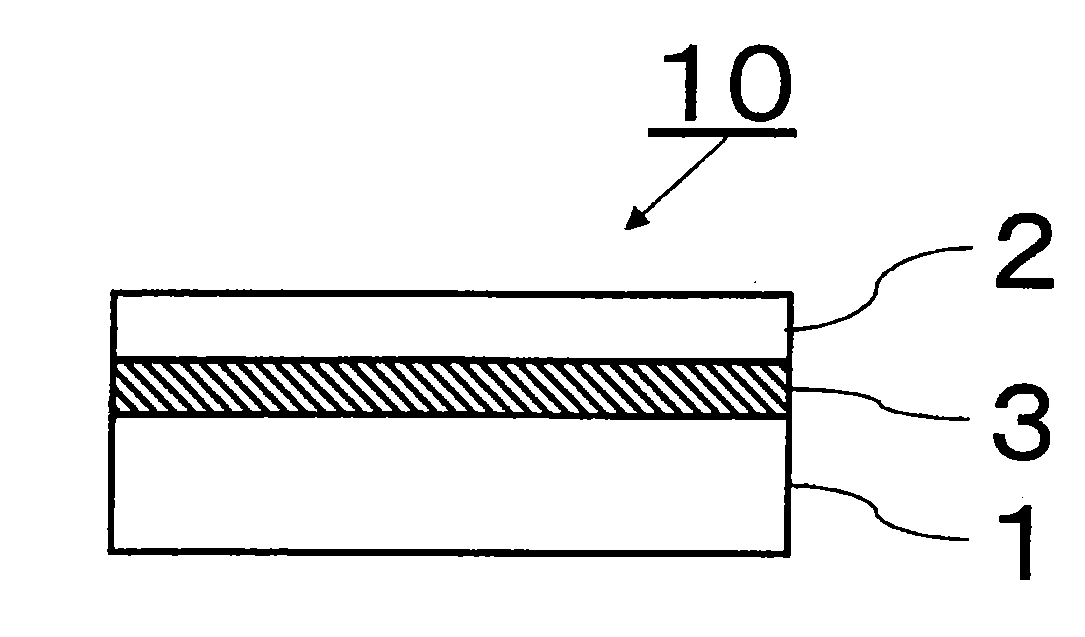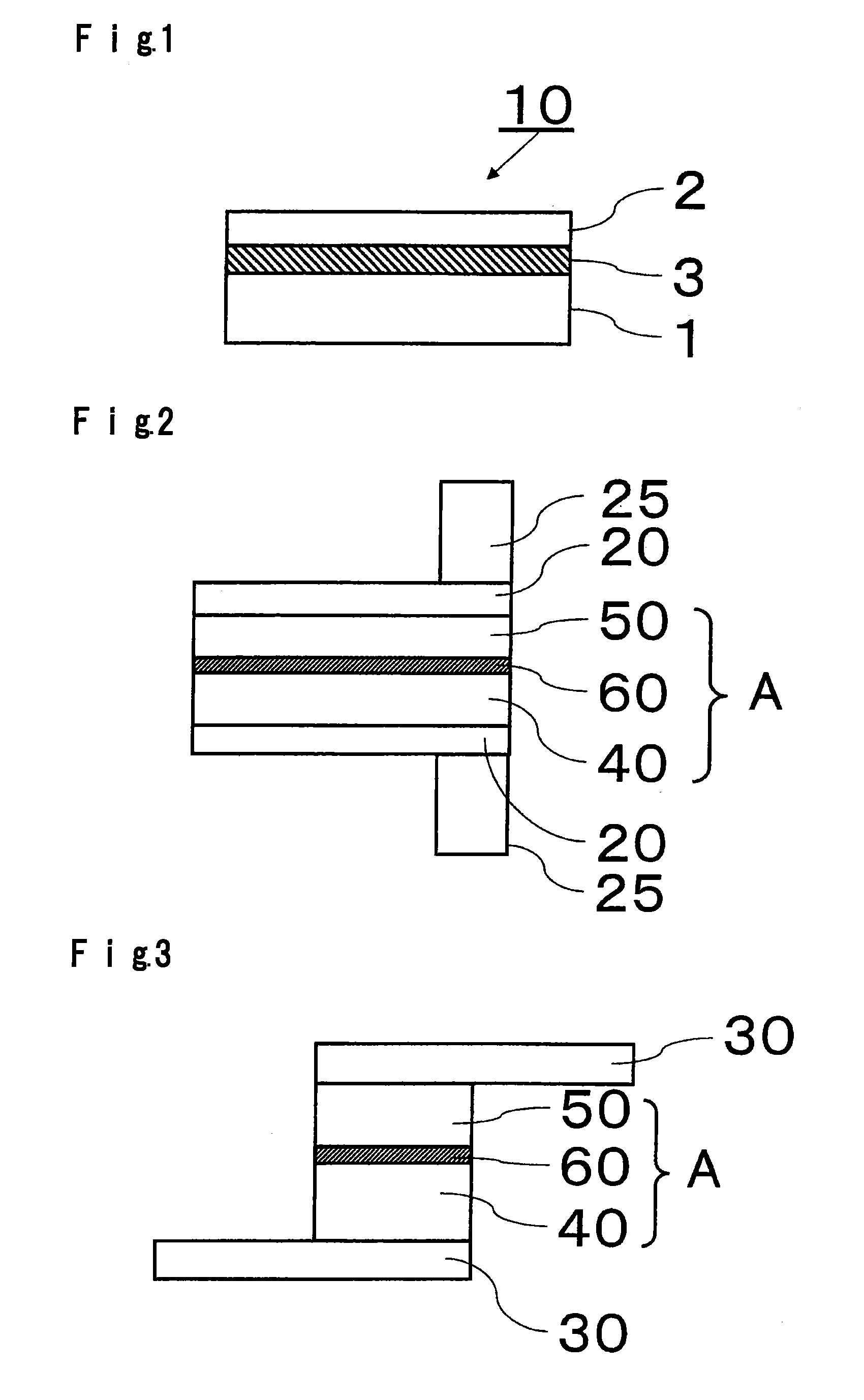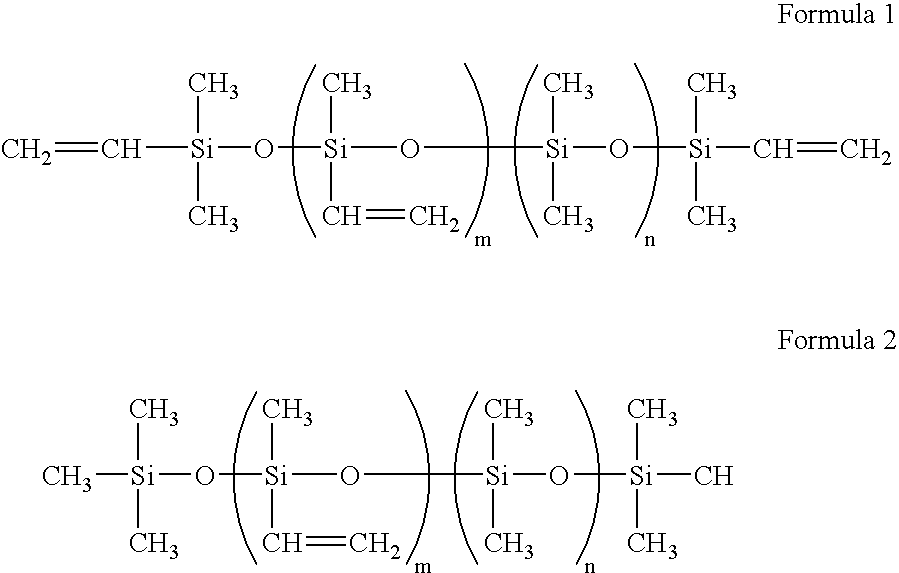Thin plate glass laminate and process for producing display device using thin plate glass laminate
- Summary
- Abstract
- Description
- Claims
- Application Information
AI Technical Summary
Benefits of technology
Problems solved by technology
Method used
Image
Examples
example 1
[0111]A support glass substrate of 400 mm×300 mm×0.7 mm in thickness having a coefficient of linear expansion of 38×10−7 / ° C. (AN100, manufactured by Asahi Glass Company, Limited) was washed with pure water and cleaned by e.g. UV cleaning, and then a mixture comprising 100 parts by mass of a solventless addition reaction silicone for release paper (KNS-320A, manufactured by Shin-etsu Silicones) and 2 parts by mass of a platinum catalyst (CAT-PL-56, manufactured by Shin-etsu Silicones) was applied (application amount: 10 g / m2) to the support glass substrate by a spin coater and heat-cured at 180° C. for 30 minutes in the air to obtain a silicone resin layer having a thickness of 16 um.
[0112]The surface on the side to be in contact with a silicone resin layer of a thin plate glass substrate (AN100) of 400 mm×300 mm×0.1 mm in thickness having a coefficient of linear expansion of 38×10−7 / ° C. was washed with pure water and cleaned by e.g. UV cleaning, and then the silicone resin layer-f...
example 2
[0125]A thin plate glass laminate (thin plate glass laminate B) of the present invention was obtained in the same manner as in Example 1 except that instead of the mixture comprising 100 parts by mass of a solventless addition reaction silicone for release paper (KNS-320A, manufactured by Shin-etsu Silicones) and 2 parts by mass of a platinum catalyst (CAT-PL-56, manufactured by Shin-etsu Silicones), a mixture comprising a linear polyorganosiloxane having vinyl groups at both ends (“8500”, manufactured by Arakawa Chemical Industries, Ltd.), a methyl hydrogen polysiloxane having hydrosilyl groups in its molecule (“12031”, manufactured by Arakawa Chemical Industries, Ltd.) and a platinum catalyst (“CAT12070”, manufactured by Arakawa Chemical Industries, Ltd.) was used. The mixing ratio of the linear polyorganosiloxane and the methyl hydrogen polysiloxane was adjusted so that the molar ratio of the hydrosilyl groups to the vinyl groups became 1.5 / 1. The platinum catalyst was added in a...
example 3
[0134]A thin plate glass laminate (thin plate glass laminate C) was obtained in the same manner as in Example 2 except that the mixing ratio of the linear polyorganosiloxane and the methyl hydrogen polysiloxane was adjusted so that the molar ratio of the hydrosilyl groups to the vinyl groups became 1.0 / 1.
[0135]In the thin plate glass laminate C, the thin plate glass substrate was closely bonded to the silicone resin layer without formation of bubbles, was free from convex defects and had favorable smoothness.
[0136]The formed thin plate glass laminate C was evaluated as follows.
(1) Simplified Peel Test
[0137]The thin plate glass laminate C was disposed so that the thin plate glass substrate faced upward, and the support glass substrate was fixed by means of a jig. In such a state, a part of the peripheral portion of the thin plate glass substrate was peeled from the support glass substrate with a razor, and further, the thin plate glass substrate was manually separated from the suppor...
PUM
| Property | Measurement | Unit |
|---|---|---|
| Temperature | aaaaa | aaaaa |
| Percent by mass | aaaaa | aaaaa |
| Thickness | aaaaa | aaaaa |
Abstract
Description
Claims
Application Information
 Login to View More
Login to View More - R&D
- Intellectual Property
- Life Sciences
- Materials
- Tech Scout
- Unparalleled Data Quality
- Higher Quality Content
- 60% Fewer Hallucinations
Browse by: Latest US Patents, China's latest patents, Technical Efficacy Thesaurus, Application Domain, Technology Topic, Popular Technical Reports.
© 2025 PatSnap. All rights reserved.Legal|Privacy policy|Modern Slavery Act Transparency Statement|Sitemap|About US| Contact US: help@patsnap.com



